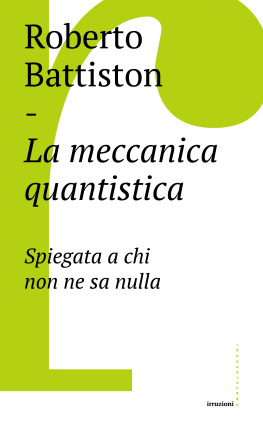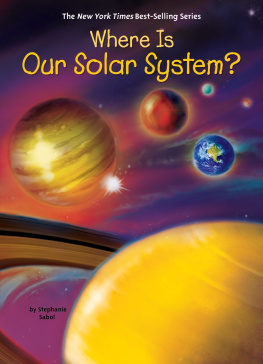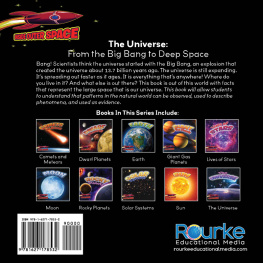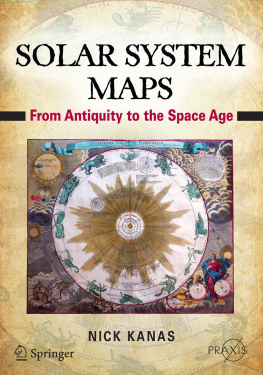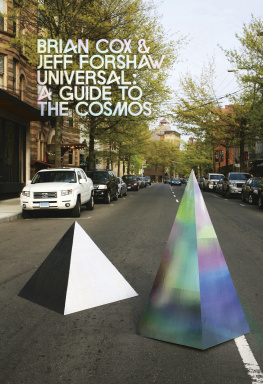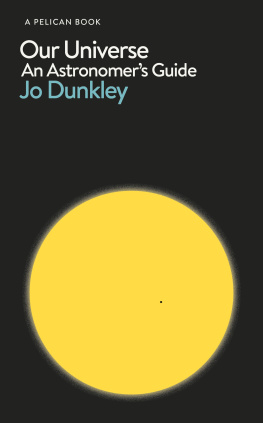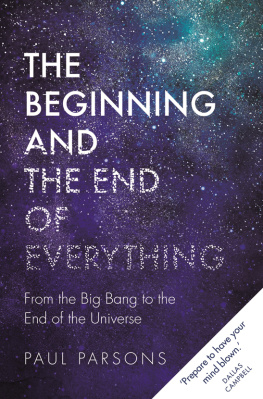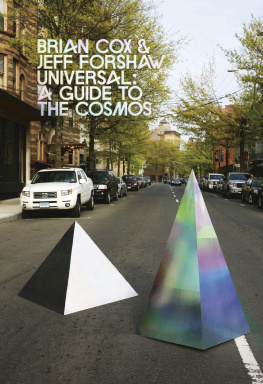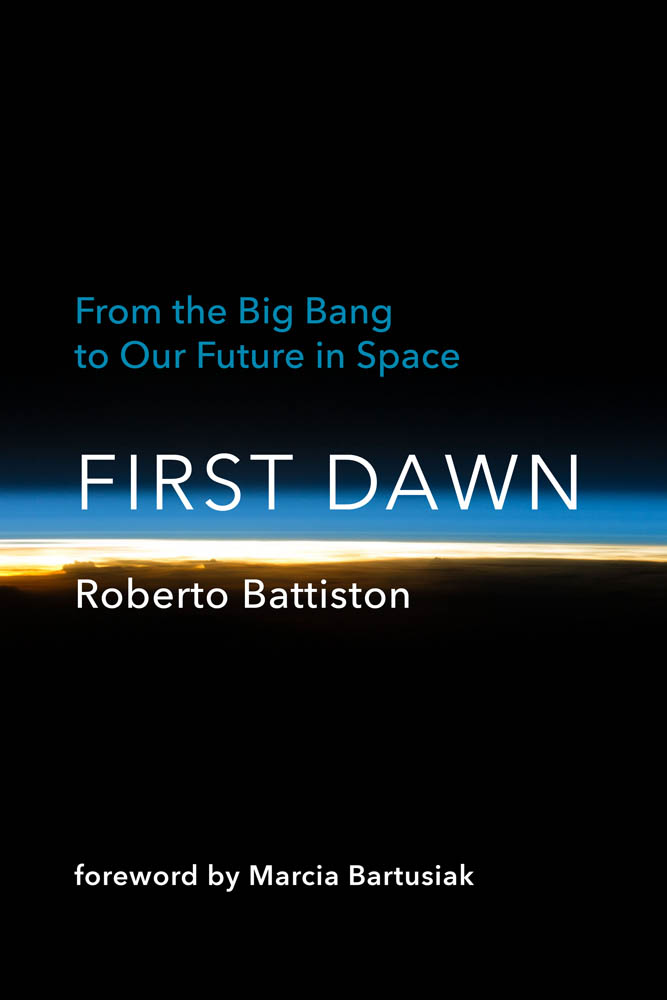
First Dawn
First Dawn
From the Big Bang to Our Future in Space
Roberto Battiston
translated by Bonnie McClellan-Broussard
The MIT Press Cambridge, Massachusetts London, England
This translation 2022 Massachusetts Institute of Technology
All rights reserved. No part of this book may be reproduced in any form by any electronic or mechanical means (including photocopying, recording, or information storage and retrieval) without permission in writing from the publisher.
Originally published as La prima alba del cosmo. 2019 Mondadori Libri S.p.A., Milan
The translation of this work has been funded by SEPS
Segretariato Europeo per le Pubblicazioni Scientifiche

Via Val dAposa 7, 40123 Bologna, Italy
seps@seps.itwww.seps.it
The MIT Press would like to thank the anonymous peer reviewers who provided comments on drafts of this book. The generous work of academic experts is essential for establishing the authority and quality of our publications. We acknowledge with gratitude the contributions of these otherwise uncredited readers.
Library of Congress Cataloging-in-Publication Data
Names: Battiston, Roberto, author. | McClellan-Broussard, Bonnie, translator. | Bartusiak, Marcia, 1950 writer of foreword.
Title: First dawn : from the big bang to our future in space / Roberto Battiston ; translated by Bonnie McClellan-Broussard ; foreword by Marcia Bartusiak.
Other titles: Prima alba del cosmo. English
Description: Cambridge, Massachusetts : The MIT Press, [2022] | Translation of: La prima alba del cosmo, 2019 Mondadori Libri S.p.A., Milano.
Identifiers: LCCN 2021051209 | ISBN 9780262047210 (hardcover)
Subjects: LCSH: Astrophysics. | Cosmology. | Outer space.
Classification: LCC QB461.3 .B38 2022 | DDC 523.01dc23/eng20220228
LC record available at https://lccn.loc.gov/2021051209
d_r0
What really interests me is whether God had any choice in the creation of the world.
Albert Einstein
Contents
This is the story about the greatest decades of advance in the history of astronomy, set amid a burst of innovation in both theory and technology. Your guide in this journey, physicist Roberto Battiston, shows us it was a time when the very definition of the universe underwent its most radical alteration. Few saw it coming.
At the start of the twentieth century, astronomers generally believed that the Milky Way and the universe were one and the same. The cosmos was a single, spiraling disk of stars set amid a void of unknown dimensions. There had been previous speculation that other galaxies existed beyond the borders of the Milky Way. In the eighteenth century, the noted British astronomer William Herschel viewed dozens of faint nebulae distributed over the celestial sphere and, like the philosopher Immanuel Kant earlier, briefly thought of them as island universes, separate congregations of stars. But this idea waned, taken over by the popular notion that many of these nebulae, especially those with a spiraling structure, were more likely baby solar systems in the making. But with a decisive observation in the fall of 1923, using what was then the largest telescope in the world at the Mount Wilson observatory in California, Edwin Hubble settled the debate once and for all. Finally able to measure the distance to a special variable star within the Andromeda nebula, Hubble determined that the nebula was indeed far-removed from the Milky Way. We were just one of billions of other galaxies spread over the depths of space.
This new, mind-altering discovery changed the thrust of astronomy completely. Once confined to planetary studies, solar research, and stellar classifications, astronomy now oversaw a far larger and more diverse cosmological vista. And with perfect timing, new ideas in theoretical physics arrived to provide needed insights into the universes behavior. Astronomers had already noticed that most of the distant nebulae were fleeing away from the Milky Way, and Einsteins newly crafted general theory of relativity (which totally redefined our notions of space and time) provided an explanation. Applying Einsteins equations, the Belgian physicist Georges Lematre determined in 1927 that space-time itself was expanding, which is why the galaxies were moving outward. They were going along for the ride. Two years later, Hubble provided the full observational proof.
Astronomers could even begin to contemplate the universes very origin. By mentally putting the universes expansion into reverse, picturing the galaxies drawing closer and closer together, they could imagine the universe emerging from a brilliant fireballwhat came to be called the Big Bang. Particle physicists went on to explain how all the elementary particles and forces emerged within this cauldron of fire within the first few seconds.
New physics was also introducing astronomers to types of stars never before imagined. Using both Einsteins equations and the laws of quantum mechanics, physicists were forced to conclude that the heavier stars could shrivel up to the size of a city at the end of their life (neutron stars) or collapse altogether (black holes). At the same time, nuclear physics at last solved the longstanding mystery of how stars shine.
Over the succeeding decades, further revelations arrived once astronomers expanded their eyesight into other regions of the electromagnetic spectrum. Radio telescopes were erected around the world and found the first hints of quasars, young galaxies spewing the energy of trillions of suns due to the action of a supermassive black hole spinning wildly in each galaxys center. Within the Milky Way, radio astronomers discovered pulsars, tiny neutron stars emitting periodic radio beeps as they whirled around. And permeating all of space was the leftover microwave radiation from the Big Bang, proof that the fiery explosion did occur nearly 14 billion years ago.
With the arrival of the space age, optical telescopes, X-ray satellites, gamma-ray telescopes, and infrared and ultraviolet observatories began to orbit the Earth and saw that the universe, long thought to be fairly serene, was actually suffused with titanic energies and explosive behaviors. X-ray sources provided the first indirect evidence that black holes existed. Perhaps the biggest surprise was the discovery that the universe was filled with some kind of added substancea yet-to-be-identified dark matterand a dark energy that is accelerating the universes expansion outward. Ordinary matterthe stuff that makes up stars, nebulae, galaxies, and usis less than 5 percent of the universes contents.
Simultaneously, astronomers realized that collecting electromagnetic radiation was not the only means of studying the universe. As Battiston points out in this book, The universe can be considered an immense laboratory in which matter and energy are continually subjected to the broadest range of experiments. Sensitive instruments embedded underground and beneath the Antarctic ice capture ghostlike neutrino particles emanating from both the Sun and the most violent events in the universe. Coupled with experiments conducted at such high-energy particle accelerators as CERN in Switzerland, cosmic rays arriving from deep space are helping particle physicists resolve nagging mysteries in their standard model of the components of matter. Battiston, former head of the Italian Space Agency, himself spent years developing special detectors to search for antimatter particles in space. These instruments operated aboard both a space shuttle and the international space station. He and his colleagues were trying to answer an outstanding question: why is the universe primarily composed of matter? How did the antimatter, which was inevitably created in the Big Bang, disappear? Or is there some of this bizarre material still out there?
Next page

